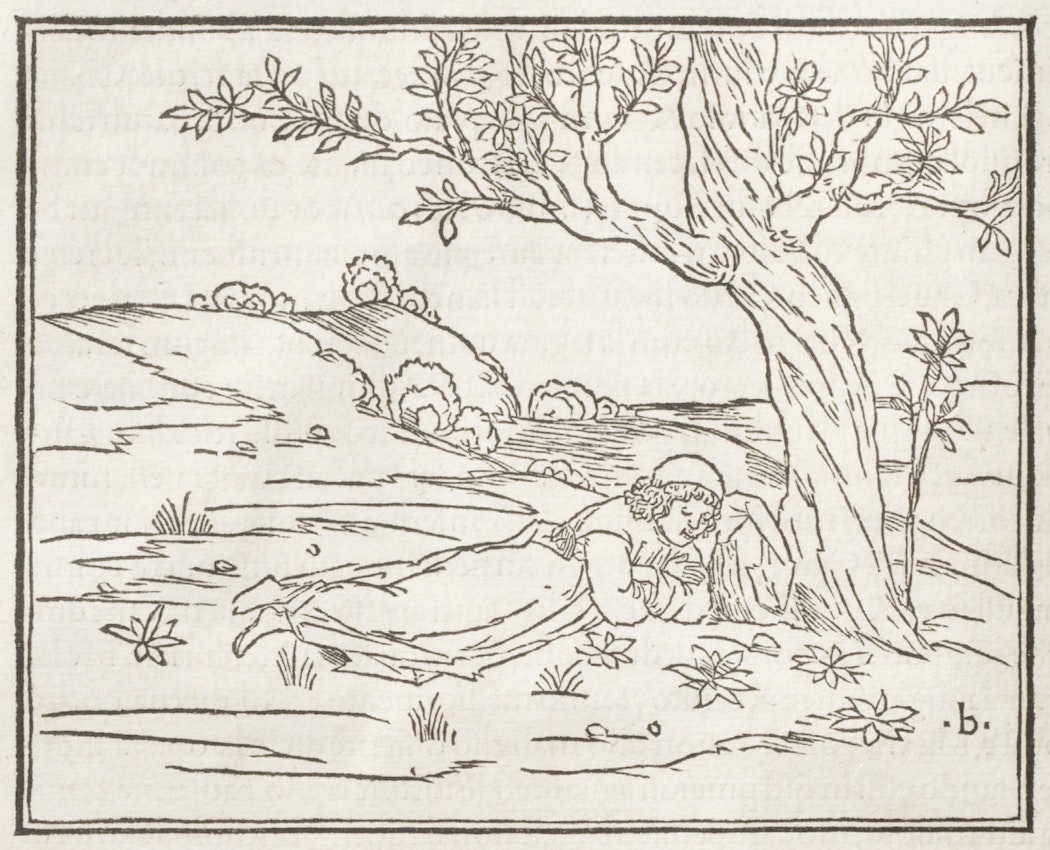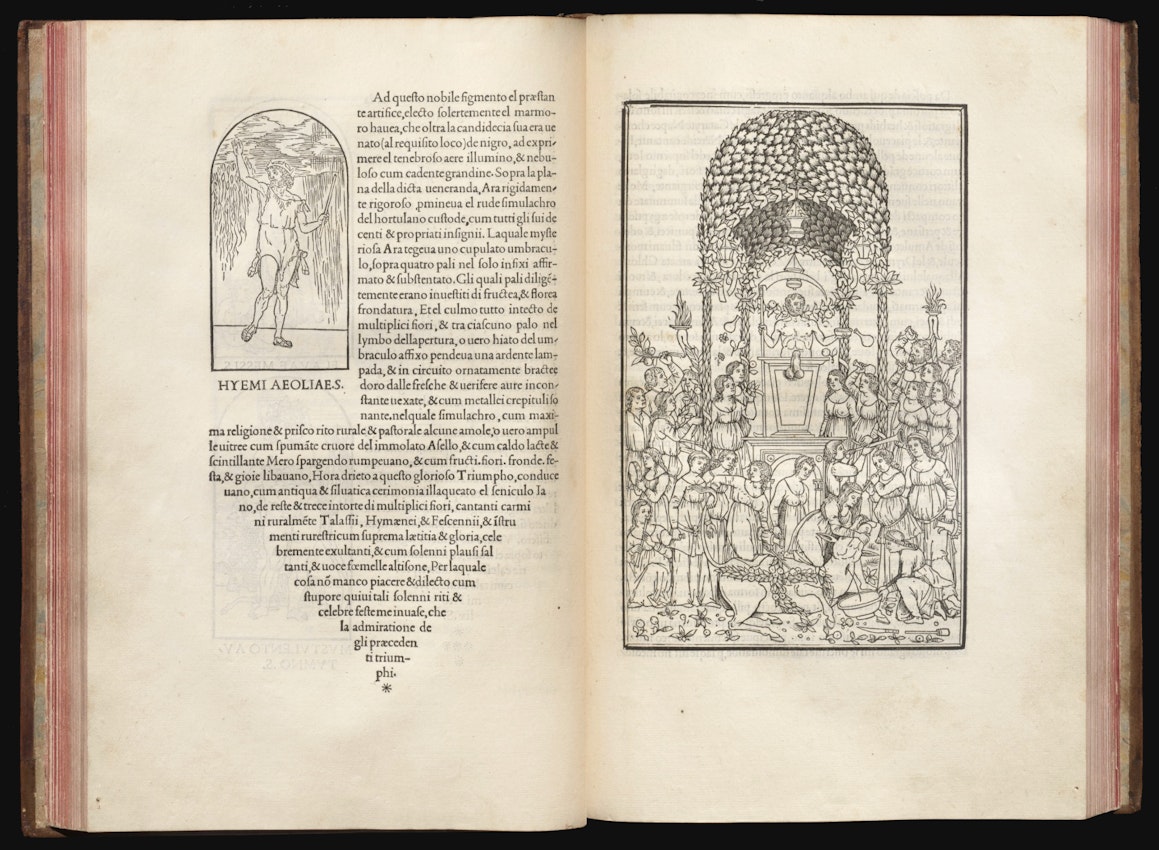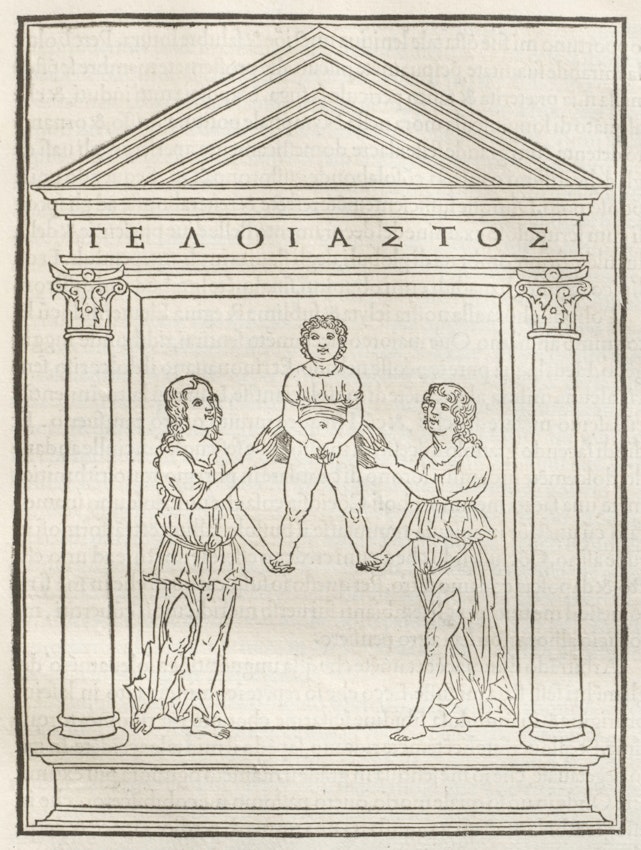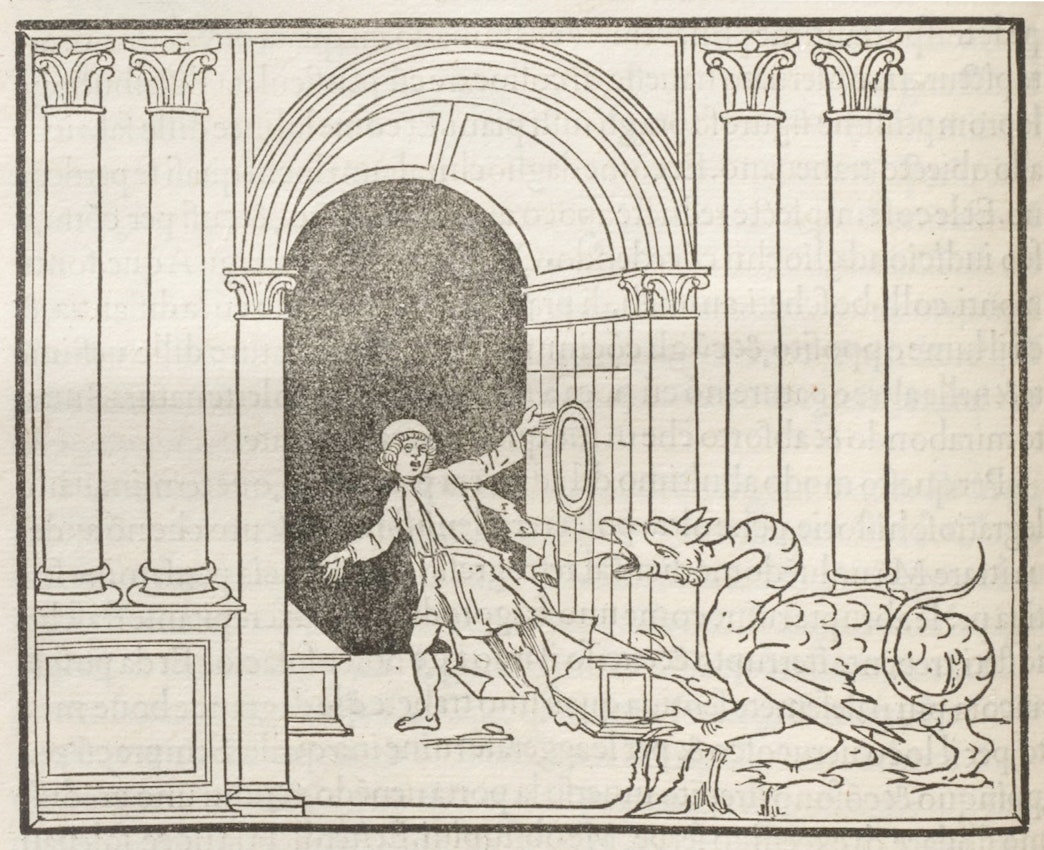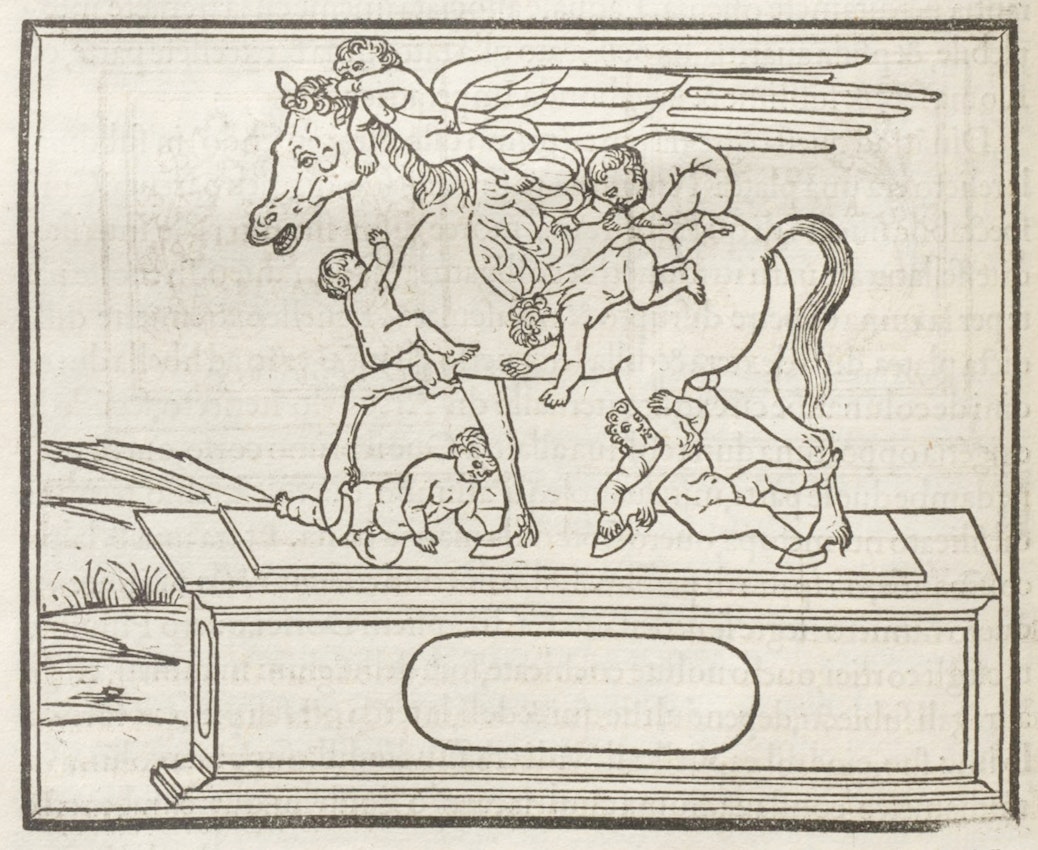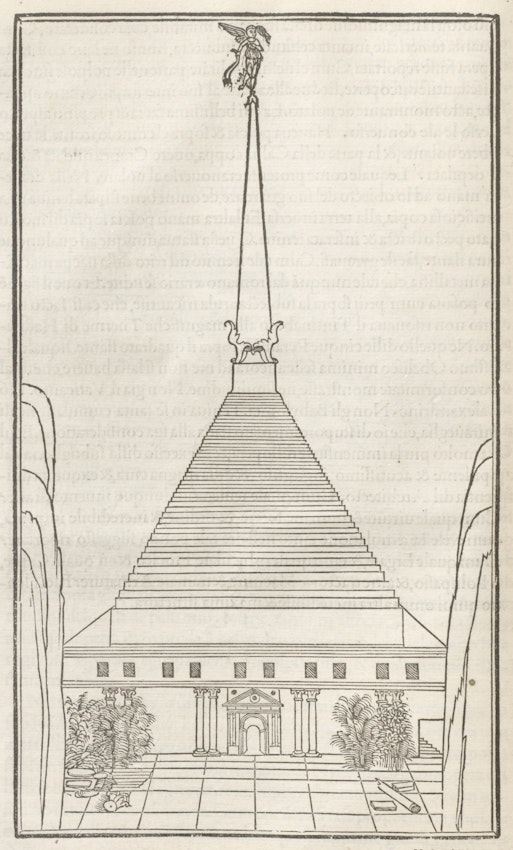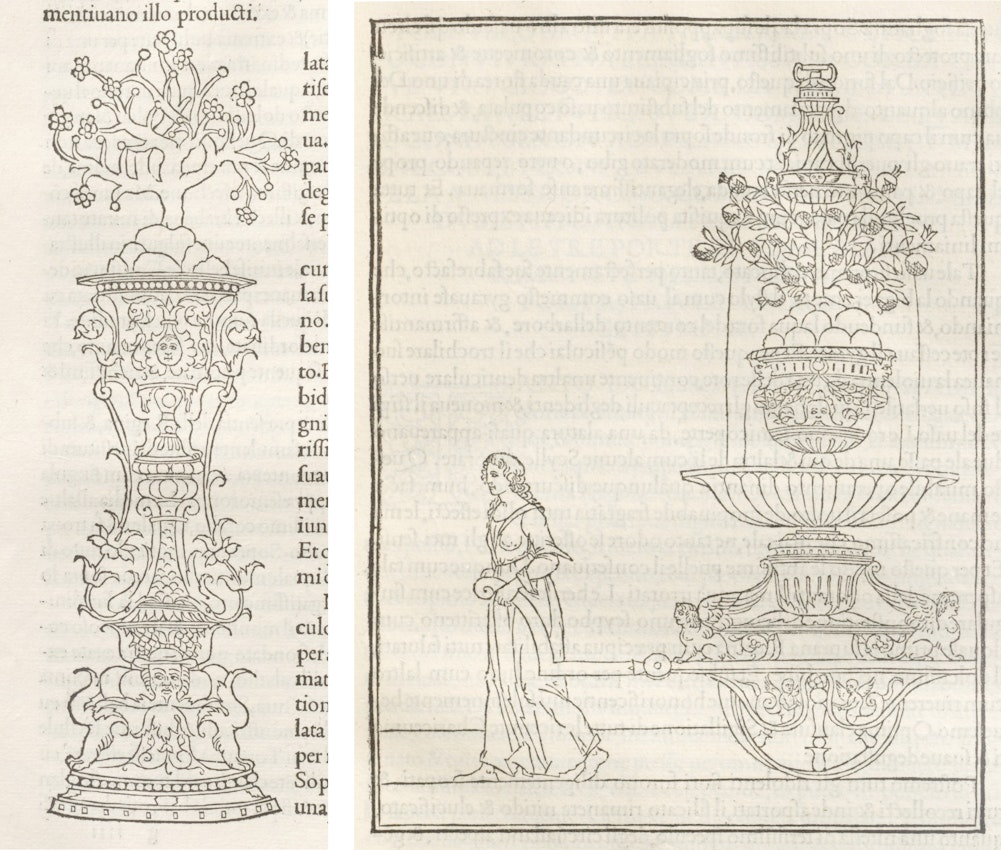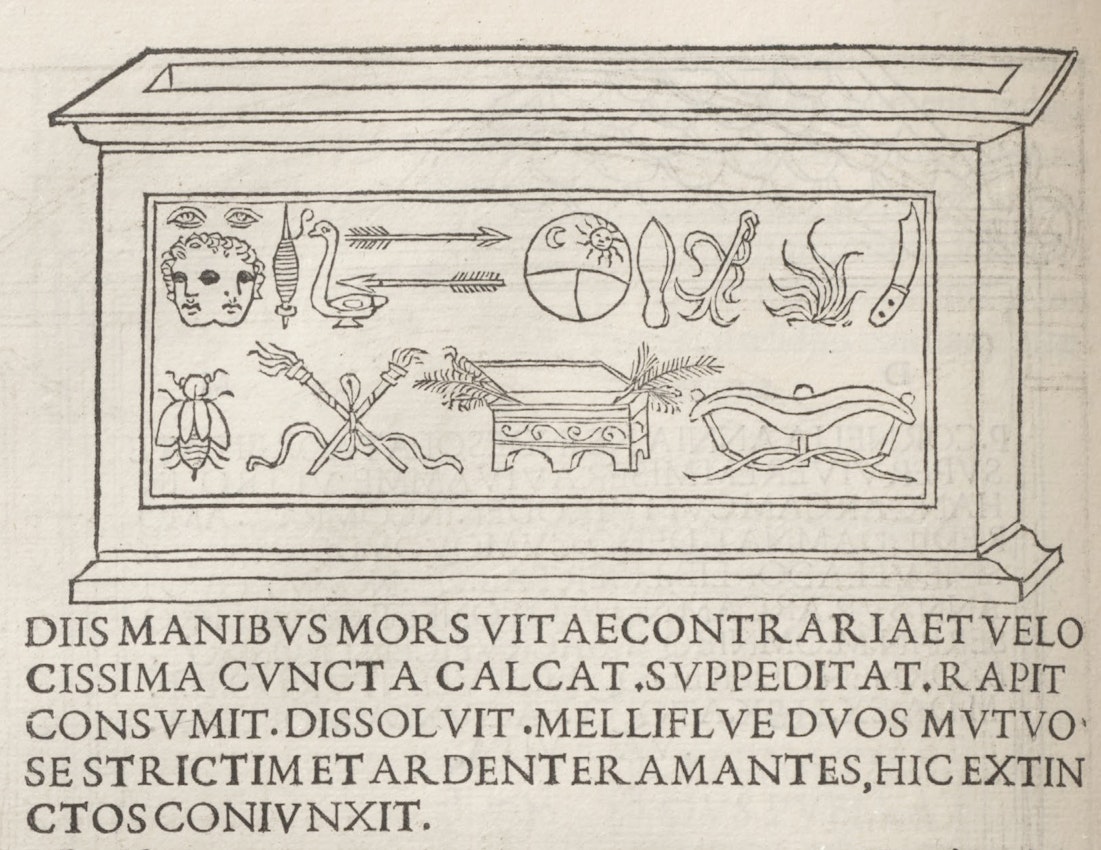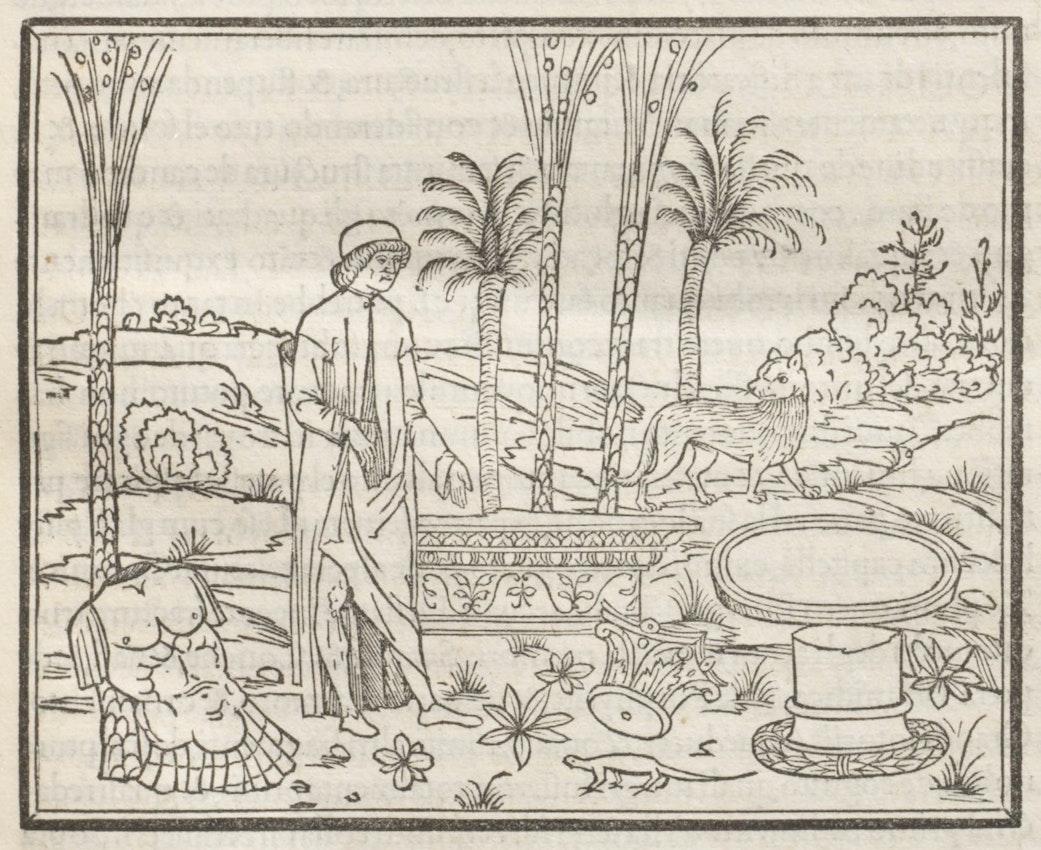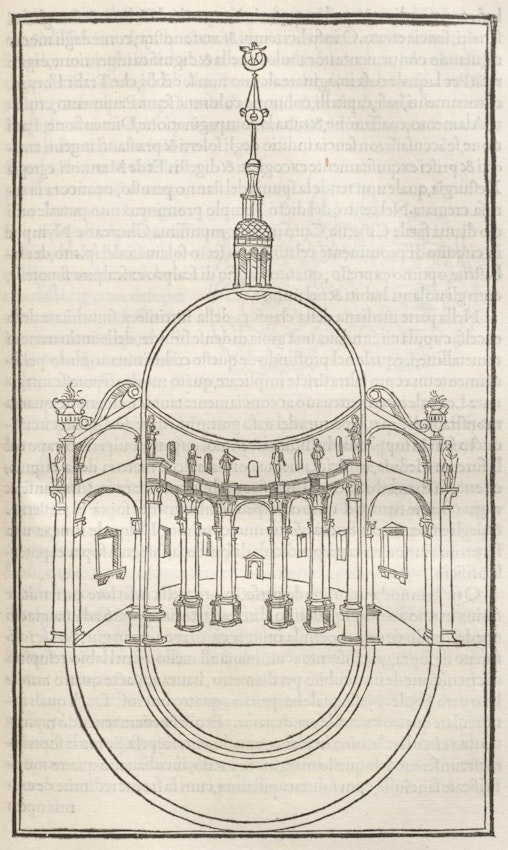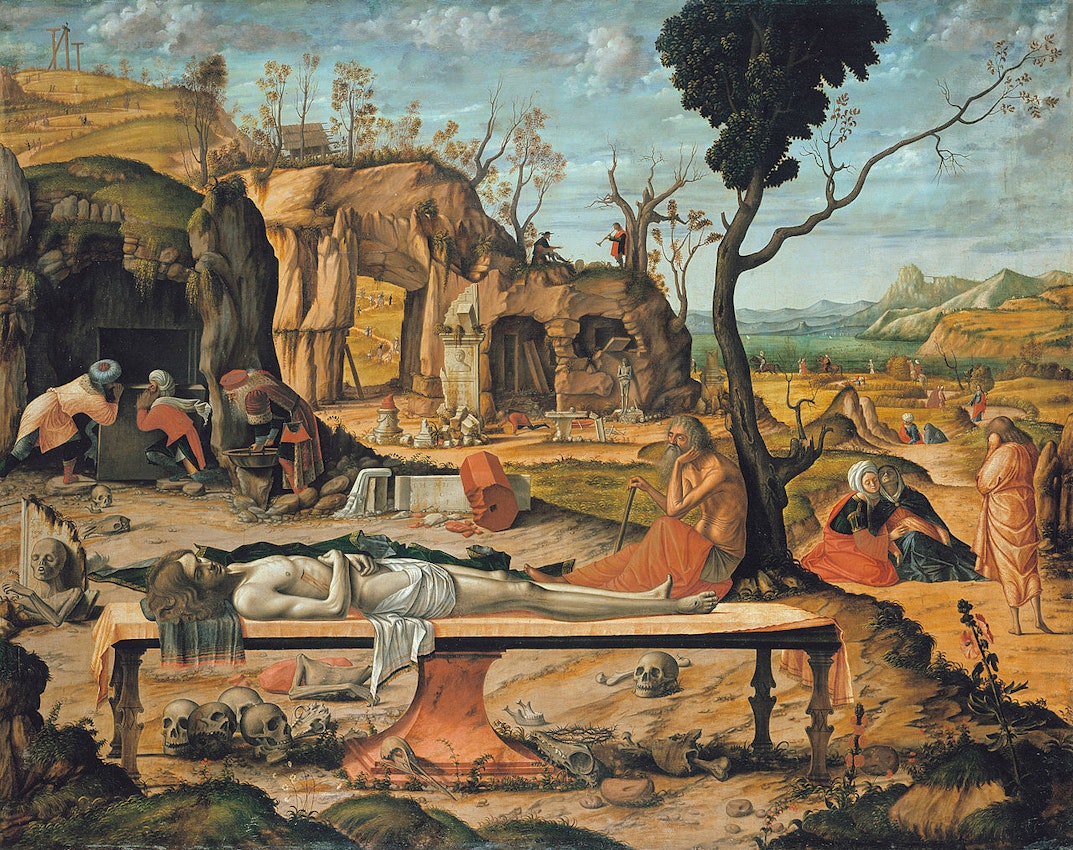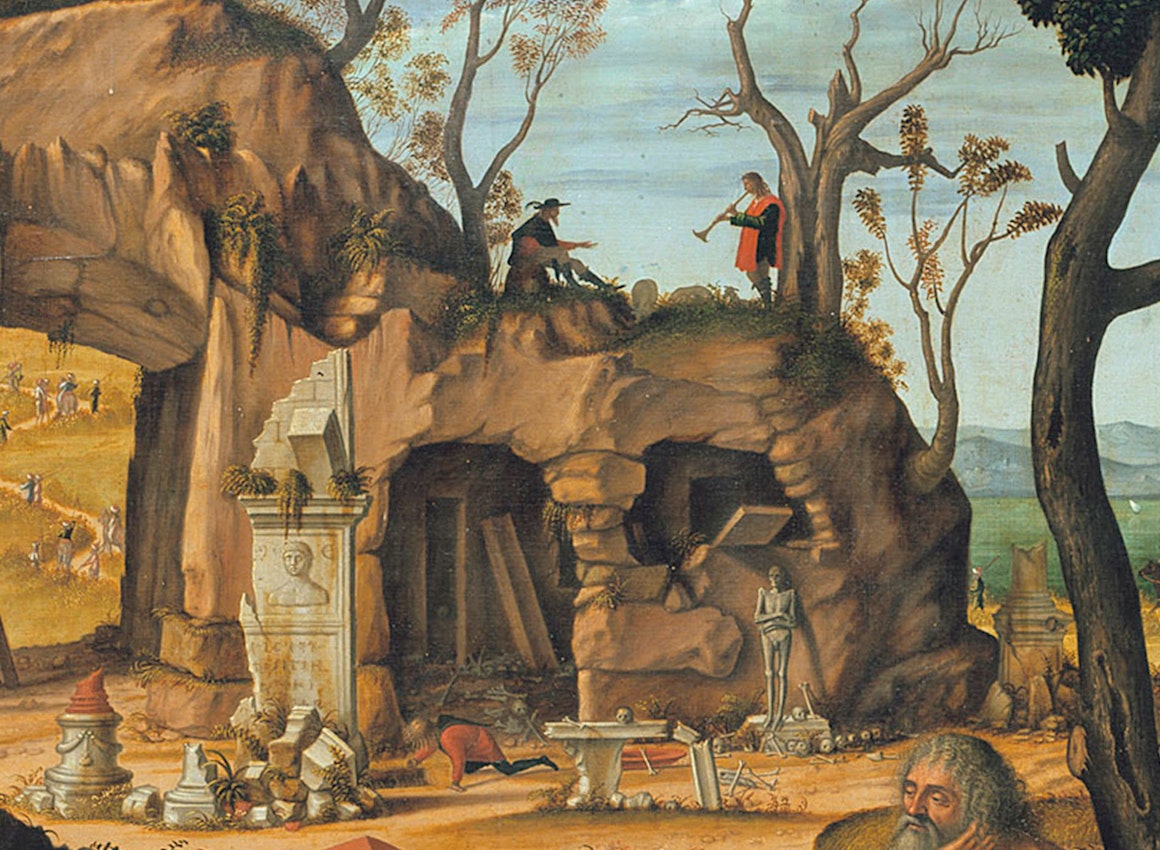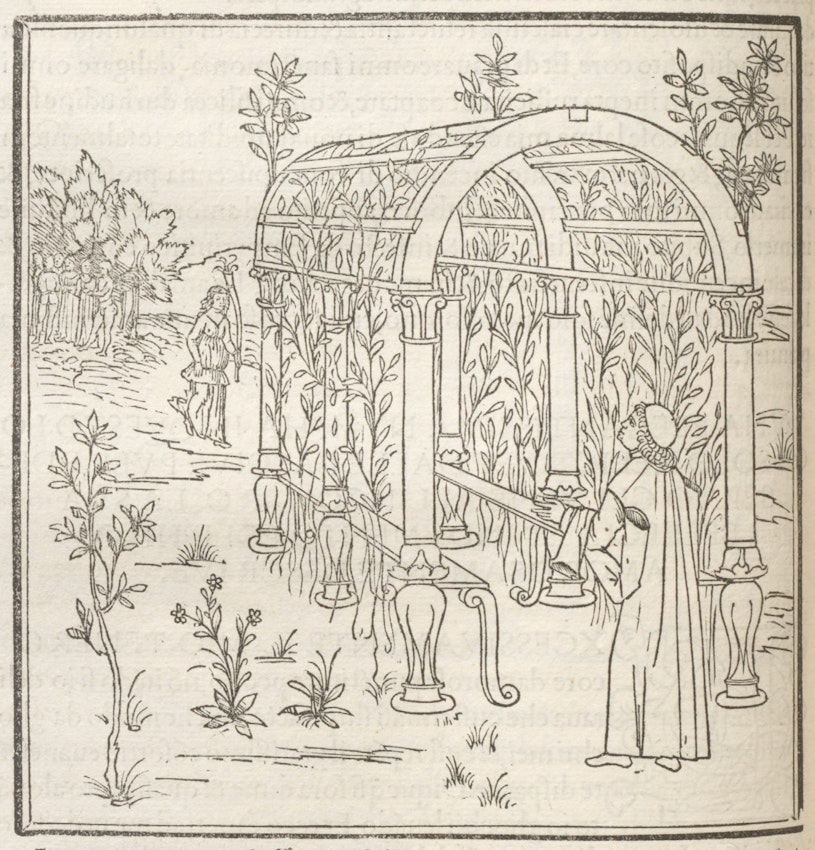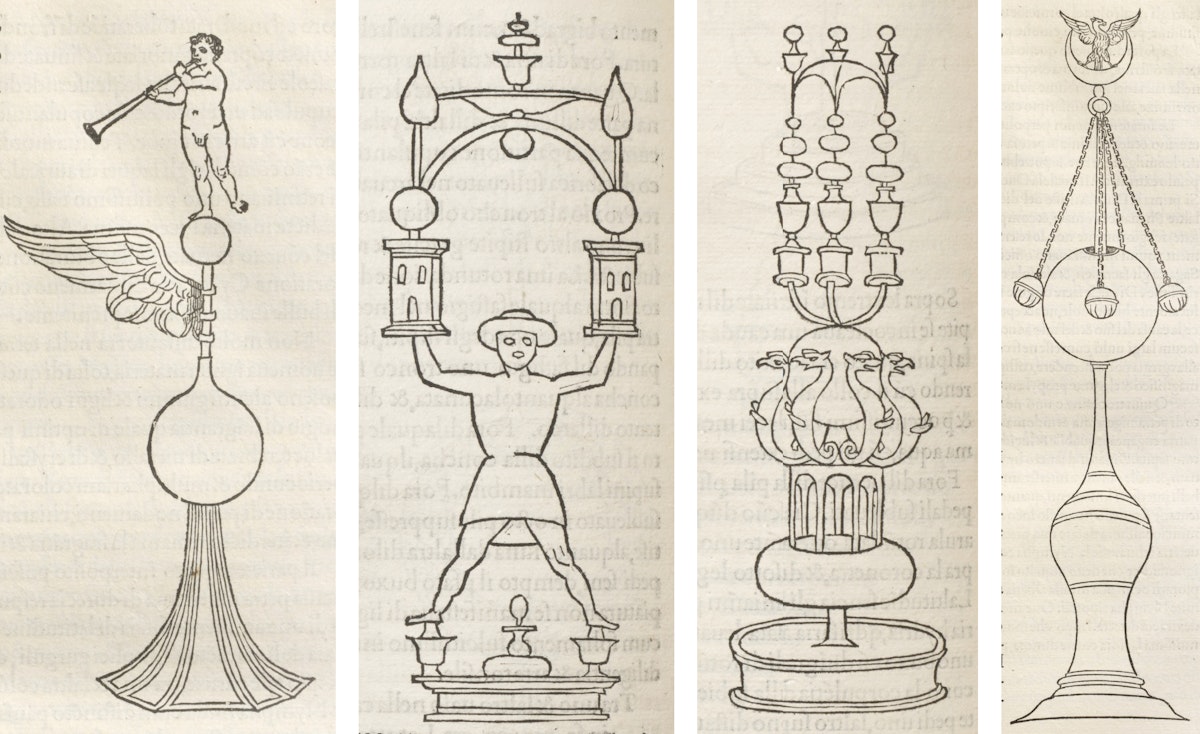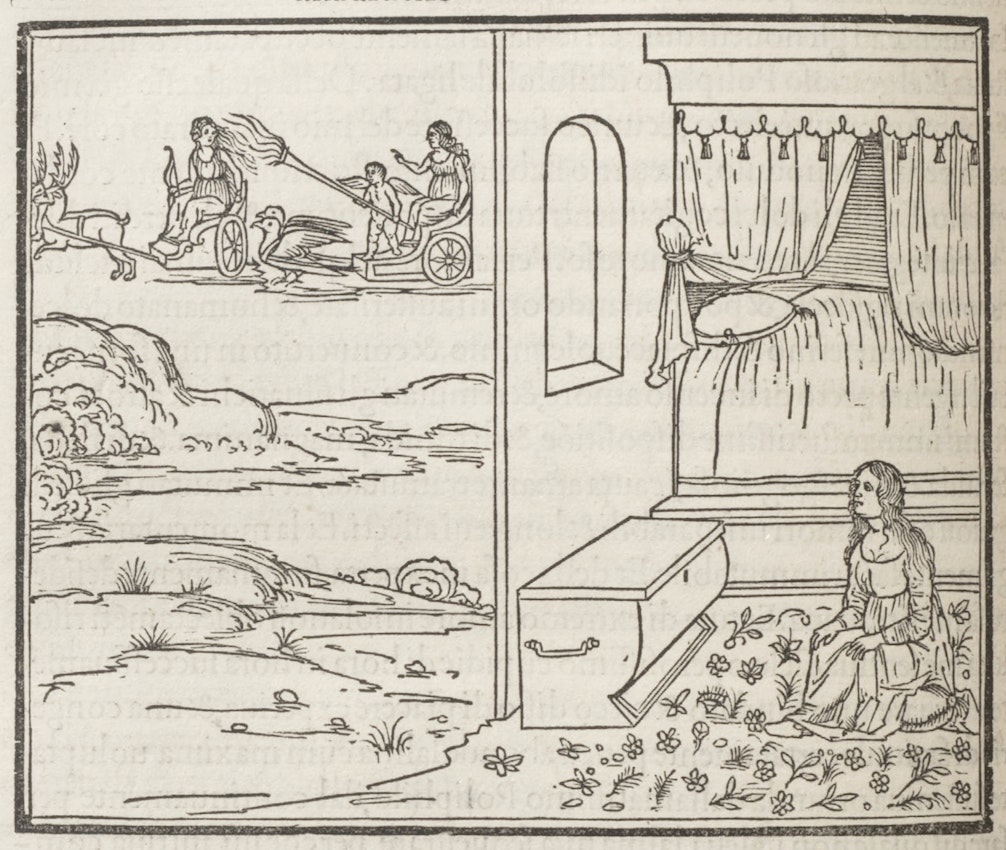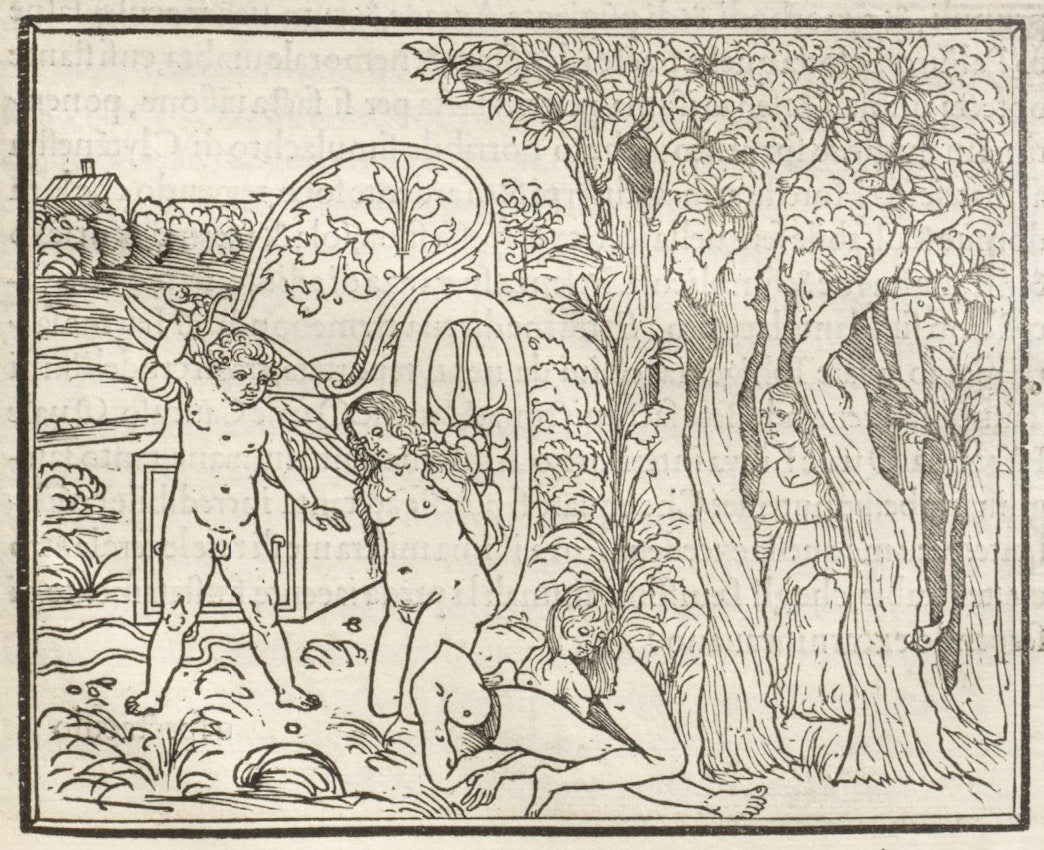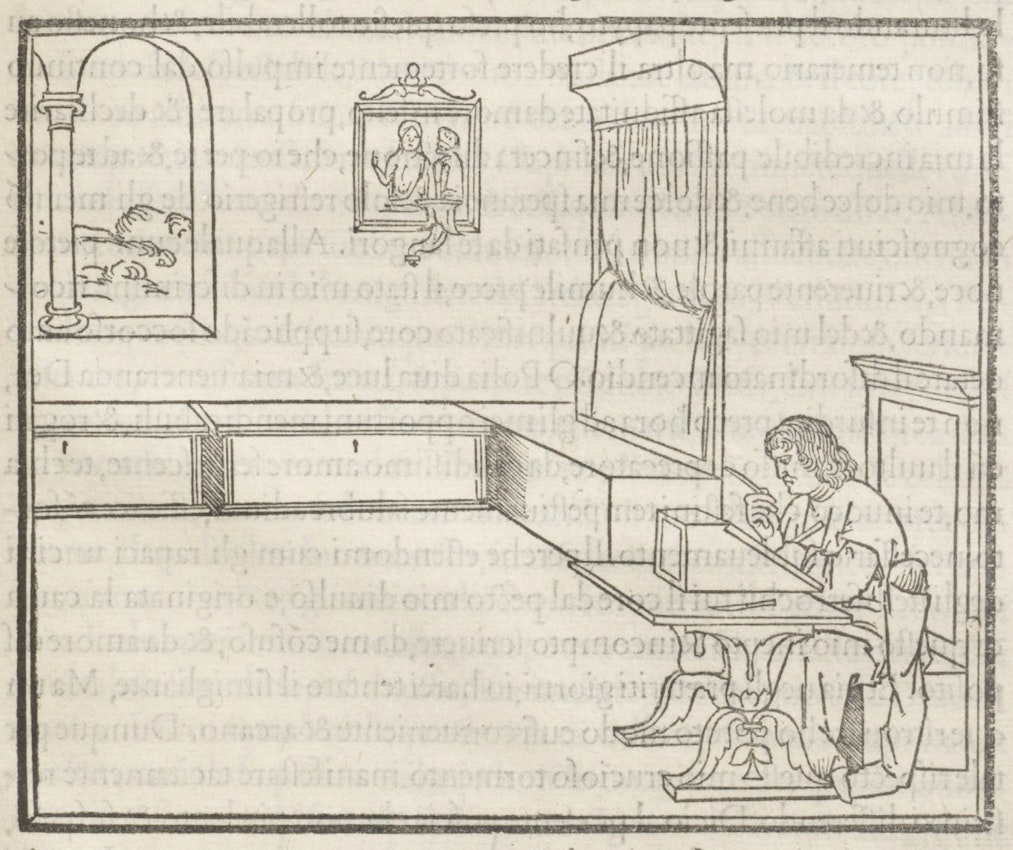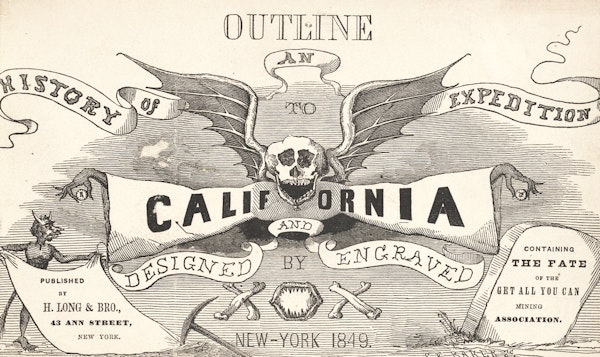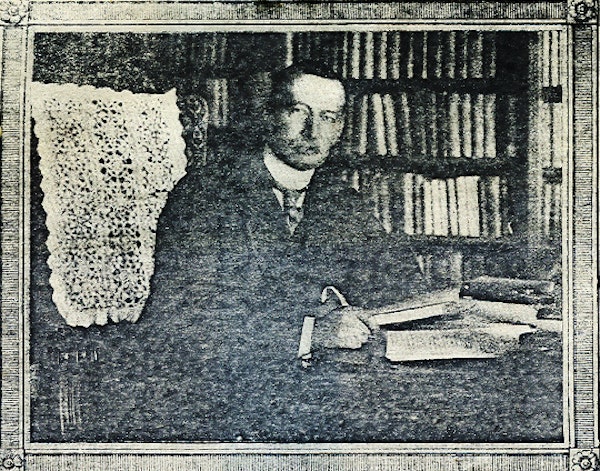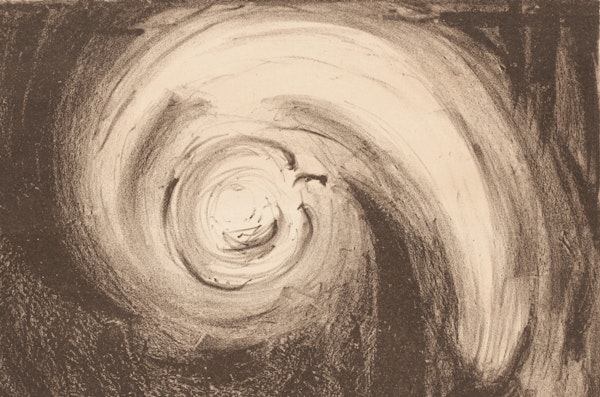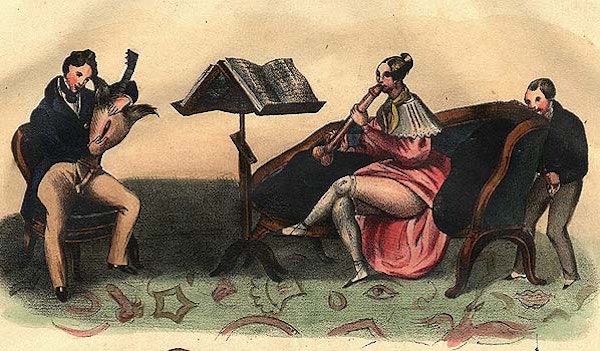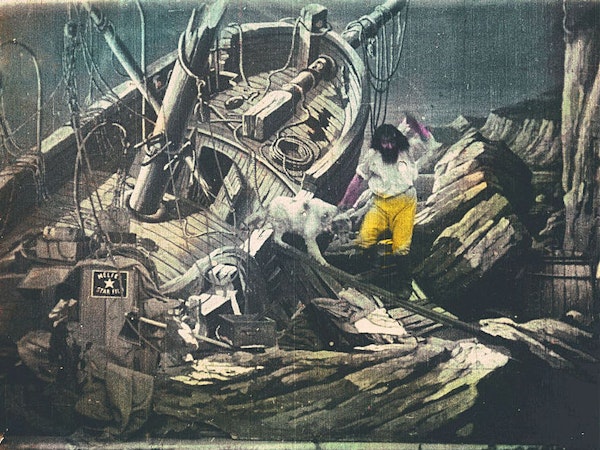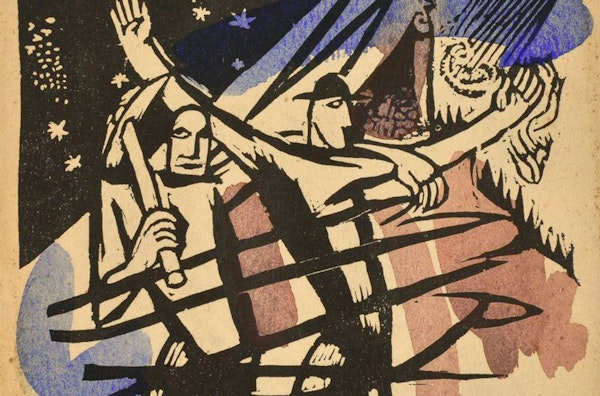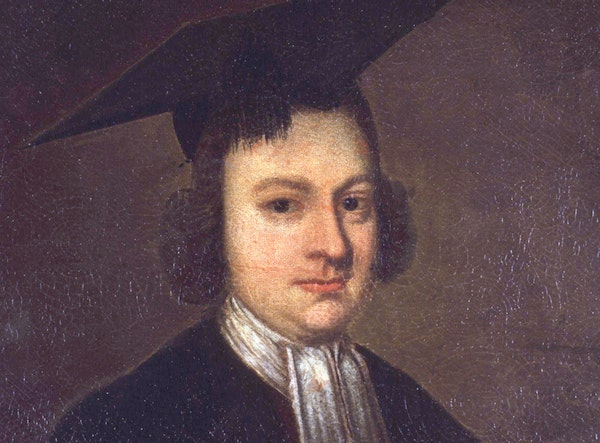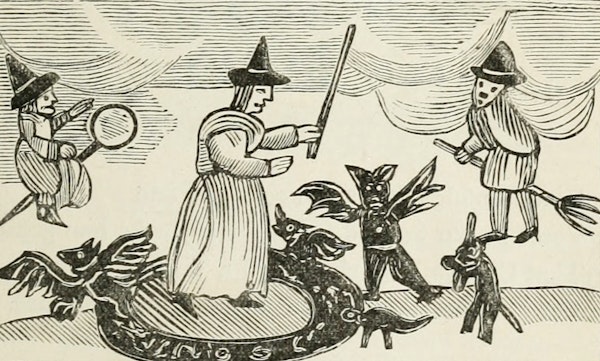Hypnerotomachia Poliphili and the Architecture of Dreams
Published by Reblogs - Credits in Posts,
With its otherworldly woodcuts and ornate descriptions of imagined architecture, Hypnerotomachia Poliphili brims with an obsessive and erotic fixation on form. Demetra Vogiatzaki accompanies the hero as he wanders the pages of this quattrocento marvel, at once a story of lost love and a fever dream of antiquity.
Published
September 28, 2022
After falling asleep on the couch, Poliphilo finds himself on a broad and wild plain. Seeking shelter, he grows drowsy once again, and enters a dream within the dream — Source.
Poliphilo’s eyelids finally close as the sun rises. His memory is tormented by Polia, whom he first glimpsed through a window in Treviso. Her chastity is non-negotiable: in a time of plague, she has sought spiritual purity. Yet Polia’s resistance only makes her suitor more desperate. On May Day, 1467, exhausted and heartbroken, Poliphilo finally gives in to a dream — the only space of requite. With its conjured worlds and strange architectural landscapes, few visions in Western literature have been scrutinized more than the vision Poliphilo had on that morning.
We know about this dream thanks to a manuscript that landed in the hands of Leonardo Crasso, a jurist of Verona who saw it fit to make the story public. Hypnerotomachia Poliphili — or, as the book came to be known in English, "Poliphilo’s Strife of Love in a Dream" — was eventually published by the renowned Venetian press of Aldus Manutius in 1499. It was the first fully illustrated book produced by Aldus, a printer whose reputation stemmed from his vast humanist erudition and devotion to classical literature. Structured as a "dream within a dream", the narrative weaves together mythological, biblical, and occult references to construct a universe filled with ruinous landscapes and orgiastic celebrations. No cost was spared by Crasso; Poliphilo’s dream is visualized across 234 folio-sized pages, which feature nearly two hundred woodcut illustrations of unparalleled mastery for their era. In Redmond Burke’s words, the editio princeps was "the most beautiful incunabulum ever printed".1 Yet Hypnerotomachia did not fit comfortably on Aldus’ august shelves. Its licentious content quickly turned into a matter of controversy, stirring speculation on the conditions and purpose of the incunabulum’s production.
On the right, The Worship of Priapus, featuring nineteen women and five men. In the foreground, priestesses sacrifice an ass beneath the phallic god’s herma — Source.
A fountain of the "little Priapus", featuring a weight-sensitive step that, when depressed, "raises the child’s instrument", spraying Poliphilo’s face with cold water — Source.
For all that we know, the original "dreamer" remains unidentified. Written in an idiosyncratic hybrid language fusing Italian, Latin, and Greek, and replete with inauthentic Egyptian hieroglyphs and an abundance of architectural and botanical jargon, the rambling text of Hypnerotomachia does little to dispel the mystery of its authorship, even though it does mirror with remarkable accuracy the composite, winding nature of its contents. An acrostic formed by the first letter of each chapter, reading "Poliam Frater Franciscus Columna Peramavit" (Brother Francesco Colonna greatly loved Polia) led scholars to identify a Dominican monk from Treviso as the author of the book.2 Nevertheless, the polymathy of Poliphilo — along with the cryptic and playful nature of the work as a whole — has raised doubts regarding the plausibility of this hypothesis, with some critics suggesting that "Colonna" could be a pseudonym.3
Hypnerotomachia has been described as a "tableau of rich inventions", "a romantic version of an encyclopedia", and a "treasure house of aesthetic descriptions".4 The name "Poliphilo" translates both as "lover of Polia" and as "lover of many". And it is indeed an erotic curiosity that spills over from his pursuit of Polia, sublimated into an almost amatory infatuation with many forms of architecture. The dream follows Poliphilo’s meandering footsteps as he wrestles with mythical creatures and his own impulses in a series of fantastical worlds. His eyes alight on imagined monuments, statues, and follies. Myriad species of plants, growing silently in these chasmous structures, dissolve into blossoming orchards and forests populated by dragons, nymphs, and carnivorous wolves. From magic lamps to ornate corals, everything is meticulously recounted by Poliphilo, as his insatiable curiosity becomes the primary force that propels him into action, fixing together the disjointed scenes of his journey.
A terrified Poliphilus fleeing from the dragon — Source.
A colossal bronze horse upon a pedestal, featuring sculpted genii unable to grip the steed due to its "great speed and hard jolting" — Source.
Designed to draw its reader into the seductive delirium of Poliphilo’s odyssey, Hypnerotomachia is perhaps the first secular iteration of an immersive virtual world to be granted a comprehensive and consistent architectural presentation. Throughout the book, the figurative rhetoric of chivalric love is brought into a playful union with the visual conventions of fifteenth-century architectural treatises. Important here is not only the attention given by the author to the architectural staging of a literary dream, but the way in which the dream, in turn, seems to infiltrate and overtake the design of this outlandish scenery.
The bewildering shapes of the various structures encountered by Poliphilo along his journey — colossal statues, pyramidal temples, and elaborate fountains, among other edifices — depart radically from the principles of composition found in canonical historiography, calling to mind a number of mythical antiquities that haunted the dreams of architects at the time. For the historian Liane Lefaivre, this association between composite architecture and the recombinant imagination is best illustrated by the Temple of the Sun, a jumble of unrelated parts that are stacked to create a monument of unthinkable dimensions.5
The Temple of the Sun, constructed of white Parian marble, with 1410 steps and a cornucopia-clutching winged figure — Source.
Considered vertically, the building is an unlikely compilation of elements. On top of the temple is a plinth, and on top of the plinth is a pyramid, and on top of the pyramid is a monolithic stone cube and on top of the monolithic stone cube is an obelisk and on top of the obelisk is a bronze statue of a nymph holding an inverted cornucopia. Poised on one leg with the other elevated in arabesque, she pirouettes on a pivot with every shift of the wind, emitting a deafening shriek with every turn.6
Hypnerotomachia abounds with similar piles ranging in size from massive to miniscule. See, for example, how the principle of the obsessive piling in the "Temple of the Sun" is repeated in the idiosyncratic formulation of the "admirable Coral Bush" and the "Perpetual Fountain"; two among the countless "miraculous" objects encountered and assiduously described by Poliphilo in his narrative. Organic and inorganic elements are here arranged vertically without any discrimination in terms of their materials, shape, or strength, producing ornamental ensembles of obscure aspiration. It is interesting to note, however, that in the Aldine edition of Hypnerotomachia, woodcuts flatten the voluminous splendor of these objects into linear compositions. The result conveys a paradoxical feeling of surface and depth that not only matches the symbolic nature of dreaming, but also the various undecipherable inscriptions and pseudo-hieroglyphs that the protagonist discovers along his journey.
Left: an ornate vessel decorated with "marvelous artificial foliage, such as is not made in our times" and surmounted by a cubit-high coral tree, which is nested in a hillock "studded with incomparable gems". Right: a perpetual fountain with harpies, scintillating emerald leaves, and a golden pomegranate tree with coral flowers containing "calyxes full of golden bees" — Source: left, right.
An ivory sarcophagus, containing two perfectly preserved corpses, decorated with so-called Egyptian hieroglyphs. Poliphilo interprets the sequence of emblems as follows: "To the blessed shades. Death spurns all life’s contrary and rapid things. It gives, it takes, it consumes, it dissolves. Here it has sweetly united two dead ones who loved mutually, strictly, and ardently." — Source.
The origins and meaning of these runes have been traced in the contours of ancient and modern dream theories, from Artemidorus’ Oneirocritica all the way to the Freudian Dream-work, where repressed drives are organized by the unconscious into condensed, encrypted representations able to evade the censorship of waking reason. Extending this premise, critics see the monuments encountered by Poliphilo as the agonizing embodiments of his elusive beloved — or, architectural ideal.7 Yet it is perilous to assume a direct affinity between form and cognition.8 In the case of Hypnerotomachia, this would reduce architecture and dreams to their faint, distorted replicas: the dream, in the words of Michel Foucault, to "a mere rhapsody of images", and architecture to a decontextualized play of forms.9
Poliphilo surrounded by remains of classical antiquity. A ferocious wolf eyes him with its jaws agape — Source.
Hypneromachia’s illustrations of architectural and ornamental objects appeared during the period when printing presses were replacing the handcraft aesthetic of illuminated manuscripts. An unprecedented exactitude of images, achieved by innovations in printing techniques during the second half of the fifteenth century, brought forth a new visual culture in which knowledge could be recorded and transmitted in a format that remained identical from copy to copy.10 Through the skillful orchestration of type, text, and image, Poliphilo’s dreamworld expands and contracts continuously, pulsating between the fragile solidity of architectural stereography and the planar mechanics of the printing press.
Although in most cases the woodcut technology’s abstraction is able to delineate the features of these admirable structures, in other cases, such as that of the Temple of Venus Physizoa, the descriptive texture in Poliphilo’s ekphrastic frenzy far exceeds the representational refinement of wooden block reliefs:
The huge dome displayed the greatest evidence of workmanship more nearly divine than human; but if it were human, it aroused astonishment that human ingenuity should make such an ambitious attempt in the founder's craft: for I judged that its great vastness had been made in a single solid fusion and casting of metal. I was astonished and overwhelmed by what I deemed to be impossible. Be that as it may, this bronze work consisted wholly of a vine sprouting from beautiful vases of the same material that were ranged perpendicularly above the columns. Thence they spread out branches, sprouts or shoots, and tendrils of dizzying intricacy, perfectly fitting the convex curve of the dome and all of the appropriate thickness. There were leaves, bunches of grapes, infants climbing and plucking them, flying birds, lizards and snakes, all modelled exactly from nature; and in between it was all transparent.
Poliphilo’s description unfolds through a marvelous enhancement of his perceptual abilities. As his (inner and outer) vision sharpens, the interior of the temple dissolves into an infinite array of details, organized in continuously magnified pictorial scenes. Despite its virtuosity — and impressive awareness of contemporary artistic conventions — the orthogonal section of the Temple of Venus fails to convey the edifice’s complexity. A complexity that seems to transcend not only the limits of representation, but also those of human comprehension.
Section and ground-plan of the Temple of Venus Physizoa, whose spire is capped by a bronze crescent moon and an eagle with its wings akimbo — Source.
In the centuries that followed its enigmatic appearance, Hypnerotomachia came to represent a type of architectural and artistic invention that derives its sensuous, eccentric qualities from the cryptic world of dreams, rather than from the orderly forms usually associated with Renaissance aesthetics. Yet, besides its multiple references to and deviations from architectural rules, the world in which Hypnerotomachia unfolds presents astounding continuities with the broader religious, civic, and cultural context of Venice at the time. The ruination of the world in which Poliphilo wanders coexists with the marvelous monuments he encounters in a way that is reminiscent of the double function of Christian icons in this period.11 For Hans Belting, the icon’s intentional fragmentation of pictorial space pointed to a transcendental world that remained intact. Accordingly, the kind of memory that these artworks heralded had "both a retrospective and, curious as it sounds, a prospective character".12 The icon was not only a trace of something from the past but also something that was promised in the future. A similar dynamic is at play in Hypnerotomachia, against the backdrop of the Venetian art scene and the work of Vittore Carpaccio in particular.
Investigating the various strategies mobilized by fifteenth-century Venetian artists to represent the past, Patricia Fortini Brown observes the imaginative re-creation of a sensuous Arcadian antiquity in works like Hypnerotomachia.13 This was not merely an echo of the paradisiacal travel reports from the Aegean islands to which Venice had privileged maritime access. It also reflected a peculiar quality shared by architectural and religious drawings at the time, namely the simultaneous invocation of multiple temporalities.
Vittore Carpaccio, Dead Christ, ca. 1520 — Source.
Detail from Vittore Carpaccio, Dead Christ, ca. 1520 — Source.
In Carpaccio’s Dead Christ (ca. 1520), for example, a landscape reminiscent of Hypnerotomachia unfolds around the body of the slain savior. Almost Byzantine in its execution, the scenery is rocky and desolate, with opened graves, skulls, broken tombstones, columns and slabs: fragments of what would have been seen as pagan ruins. In the background of the image, however, appear two figures in Quattrocento attire and pastoral attitude, happily playing musical instruments. Like Poliphilo and Polia, these figures function as "time travelers", contemporizing antiquity for the beholder, while intruding into a past that will be forever unattainable.14 In the pages of the Renaissance architectural treatise, the "downward movement of imitation", bringing the present back into the past, and the "upward motion of invention", in which the past serves as a model for the future, are also merged in a similar "chiasm", argues Anne-Marie Sankovitch.15 The latter creates uncanny structures built on the logic of dreams — like images drawn from one's memories to project a yet-to-be-realized reality.
Poliphilo looking through a bower at Polia, who approaches from a distance. "She had such a presence and charming elegance that perhaps even amorous Idalia did not appear thus to warlike Mars, nor the handsome shepherd Adonis to her, nor the delicate Ganymede to almighty and inflamed Jupiter, nor beautiful Psyche to ardent Cupid" — Source.
From left to right: a weathercock, with genius blowing the trumpet; a box tree pruned into the shape of a man, whose feet rest on vases, and arms support an ornament of towers and arch; another box tree, this one pruned in the shape of a centrepiece; and the decorative crowning of the Temple of the Sun — Source: 1, 2, 3, 4.
Under the guise of the dream, Hypnerotomachia seems to present a new symbolic universe in which the complicated relationship between ancient and modern space could be redefined. In his influential book, Unearthing the Past, Leonard Barkan showed how the pace at which antiquities were being unearthed in the late Quattrocento brought forth a sea change in historical, political, and aesthetic thought.16 These resurfaced objects didn’t just challenge established views on the past. They also generated new kinds of artistic expression and appreciation, including the production and circulation of drawings and ekphrastic narratives, the first private collections of antique fragments, and new forms of theory and practice that embraced architecture’s inventive as well as restorative potential.
Yet Hypnerotomachia is much more than an architectural manifesto. These intricate negotiations also seem to emerge through the orchestration of Poliphilo’s and Polia’s triste. Almost halfway through his dream, Poliphilo encounters the beloved and embarks with her on a journey to celebrate their union. The dreamworld appears to have diminished Polia’s resistance; receptive to Poliphilo’s advances, the woman sets off to explain her former hesitations and recent change of mind.
A sequence from Polia’s narrative: "a furious goddess crowned with a wreath of agnus castus, with an unstrung bow and empty quiver, who turned a frightful countenance on me, burning with the desire to wreak cruel vengeance" — Source.
By honoring the vow she took during the plague that ravaged her hometown, Polia dutifully safeguarded her emotional and bodily boundaries against a courtship that she saw as a risk to her life. "No sooner did I see him before me", she describes of a meeting with Poliphilo, "than I felt polluted [contaminata]".17 Hiding alternatingly in the shrine of Diana’s temple and in the privacy of her bedchamber, Polia almost succeeds in avoiding her suitor’s pursuit. It is only after experiencing a revelatory vision of her own that she begins to doubt her resistance. She dreams about a graphic, supernatural violation of body and soul — a Cupid-like winged boy playing the dismembering executioner — representing the societal violence that awaits should she continue to reject the company of a male companion. Rarely acknowledged by scholarship, the author’s decision to give Polia a voice and dream of her own remains one of the most daring propositions of the book.
Polia witnesses maidens "whipped incessantly by a winged youngster" who then murders them with an iron sword "without the slightest indulgence or pity" — Source.
Much like Nausicaa’s visitation by the goddess Athena in the opening of the Odyssey’s sixth rhapsody, Polia’s vision at the closing of Hypnerotomachia reaffirms the primacy of a patriarchal, civic order over the sovereignty of a female body. Unlike Nausicaa, however, who was chastised for the messiness hidden behind the ornate doors of her bedroom, Polia is forced to give up idealistic purity and embrace the disturbing disorder of Poliphilo’s world. This reversal becomes all the more pronounced considering how the tactility of Nausicaa’s messy trousseau gives way to fully fledged architectural pandemonium in Hypnerotomachia.
As the protagonist digresses in the warped space-time of dreaming, Polia’s narrative comes to fold the creative potential of Poliphilo’s imagination back to the source of its departure: a mundane room in fifteenth-century Treviso. And when Poliphilo finally awakens, he is alone. Polia has vanished, along with the architectural fantasies that populated his dream. Her ultimate disappearance signals the most radical gesture in a book that wrestles with the enigma of its own creation.
Poliphilus alone, writing to his beloved Polia — Source.
Demetra Vogiatzaki is a historian of eighteenth-century architecture and a doctoral candidate at Harvard University, where she works on the intersection of virtual and material spaces in early modern Europe. Her dissertation "On Marvels and Stones: Dreams, Virtuality, and Space in Late Eighteenth-Century France", partly conducted in collaboration with the French literature department at Sorbonne, presents dreaming as an integral and indispensable component of eighteenth century socio-political processes. For her research, Demetra has received generous support from Harvard, UCLA, the French Embassy in the United States, and the Canadian Center of Architecture. Her broader interests include the politics of early modern imagination, eighteenth-century environmentalism, and Eastern Mediterranean diplomatic mediations in the Enlightenment.
Related Essays
Comic Gold: The Easterner Goes West in Three Early American Comics
The California Gold Rush transformed the landscape and population of the United States. It also introduced a new figure into American life and the American imagination — the effete Eastern urbanite who travels to the Wild West in quest of his fortune. Alex Andriesse examines how this figure fares in three mid-nineteenth-century comic books. more
American Kaleidoscope: Morton Prince and the Boston Revolution in Psychotherapy
In 1906 the American physician and neurologist Morton Henry Prince published his remarkable monograph The Dissociation of a Personality in which he details the condition of 'Sally Beauchamp', America's first famous multiple-personality case. George Prochnik discusses the life and thought of the man Freud called "an unimaginable ass". more
Still Farther South: Poe and Pym’s Suggestive Symmetries
By John Tresch
In 1838, as the United States began its Exploring Expedition to the South Seas, Edgar Allan Poe published a novel that masqueraded as a travelogue. John Tresch guides us along this strange trip southward, following the pull of its unfathomable mysteries. more
The Secret History of Holywell Street: Home to Victorian London’s Dirty Book Trade
Victorian sexuality is often considered synonymous with prudishness, conjuring images of covered-up piano legs and dark ankle-length skirts. Historian Matthew Green uncovers a quite different scene in the sordid story of Holywell St, 19th-century London's epicentre of erotica and smut. more
Defoe and the Distance to Utopia
By J. H. Pearl
In the wake of recent political shifts and the dystopian flavour they carry for many, Jason Pearl looks to the works of Daniel Defoe and the lessons they can teach us about bringing utopia home. more
Walt Whitman in Russia: Three Love Affairs
By Nina Murray
Walt Whitman’s influence on the creative output of 20th-century Russia — particularly in the years surrounding the 1917 Revolution — was enormous. For the 200th anniversary of Whitman's birth, Nina Murray looks at the translators through which Russians experienced his work, not only in a literary sense — through the efforts of Konstantin Balmont and Kornei Chukovsky — but also artistic, in the avant-garde printmaking of Vera Ermolaeva. more
Christopher Smart’s Jubilate Agno
By Frank Key
The poet Christopher Smart — also known as "Kit Smart", "Kitty Smart", "Jack Smart" and, on occasion, "Mrs Mary Midnight" — was a well known figure in 18th-century London. Nowadays he is perhaps best known for considering his cat Jeoffry. Writer and broadcaster Frank Key looks at Smart's weird and wonderful Jubilate Agno. more
If You Liked This…
Prints for Your Walls
Explore our selection of fine art prints, all custom made to the highest standards, framed or unframed, and shipped to your door.
The majority of the digital copies featured are in the public domain or under an open license all over the world, however, some works may not be so in all jurisdictions. On each Collections post we’ve done our best to indicate which rights we think apply, so please do check and look into more detail where necessary, before reusing. Unless otherwise stated, our essays are published under a Creative Commons Attribution-ShareAlike 3.0 license. Strong Freedom in the Zone.
The Public Domain Review is registered in the UK as a Community Interest Company (#11386184), a category of company which exists primarily to benefit a community or with a view to pursuing a social purpose, with all profits having to be used for this purpose.

